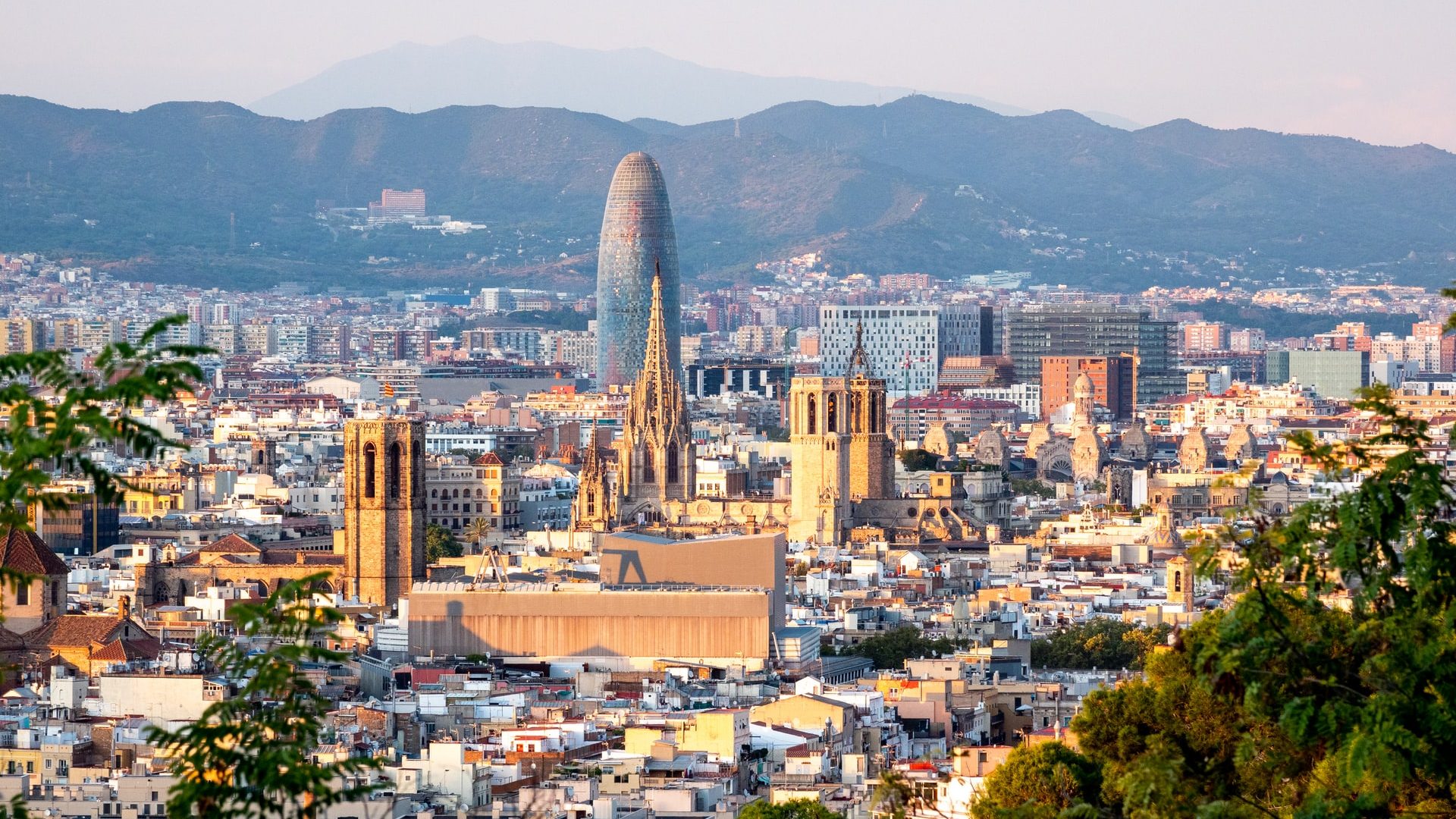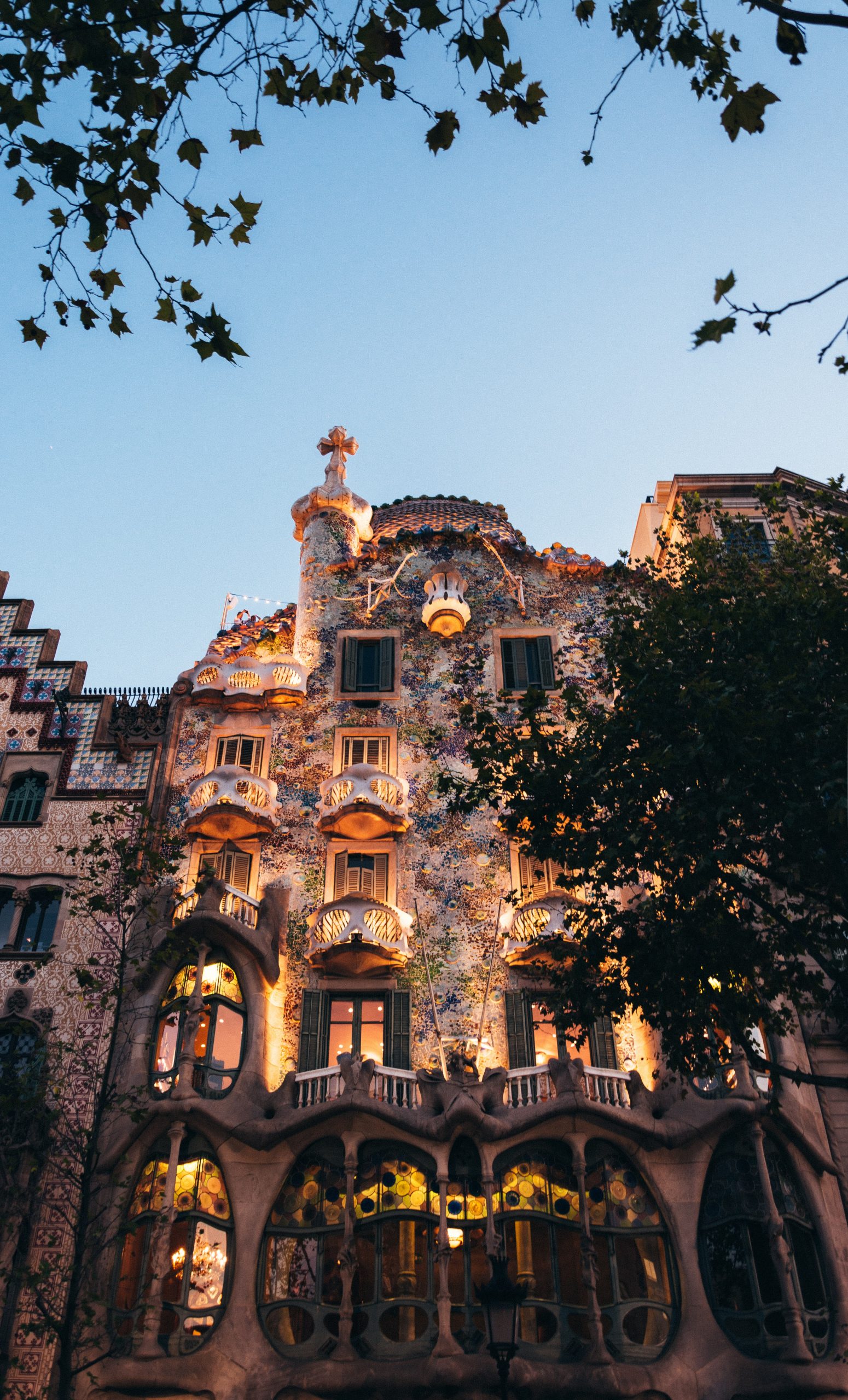Barcelona – a city portrait

Read here which architectural and urban planning icons every Barcelona visitor should see and which new urban planning projects are currently in the making.
Billboard
Skyscrapper
Halfpage
Barcelona is, without a doubt, one of Europe’s most fascinating cities. Located between sea and mountains in north-eastern Spain, the city has about 1.62 million inhabitants. The Catalan capital is famous for its art and architecture. Gothic and modern architecture styles combine and result in a thrilling cityscape.
Founded by the Romans at least two millennia ago, Barcelona has always been a compressed and dense city. Physical walls and geographical limits have created boundaries that resulted in very intentional architecture. Unlike many other cities, Barcelona has never sprawled. Instead, there has always been a specific plan for its development. Most notably, Ildefons Cerdà created an extensive grid-iron pattern called l’Eixample in the 1850s. Until today, this design strongly influences the city. But the 1992 Olympic Games and the 2004 Universal Forum of Cultures have resulted in important urban renewal projects that follow a culture-led approach.
There are also many interesting urban development trends in Barcelona. Its unique super-block design with chamfered corners is inspiring urban planners all over the world to aim for a similar layout, as it lends itself to ideas such as the 15-minute city and a more pedestrianised urban development.
Medium Rectangle
Halfpage
Architecture highlights of Barcelona
Antonio Gaudí is the first name that comes to mind when thinking about Barcelona. With impressive structures such as the infamous Sagrada Família, still unfinished, the modernist architect has certainly given Barcelona many of its architectural highlights. In addition, sights such as cathedrals, the opera house, theatres, and museums create a vivid, diverse and culture-focused cityscape in Barcelona. As the capital of Catalunya, the city comes with its own language and traditions. It has a strong sense of a separate identity, which is also visible in its distinctive architecture.
A walking tour of Barcelona should include one of the city’s oldest buildings, the Monestir de Pedralbes. Established in 1326, this stunning example of Gothic architecture served as a convent for nuns with a noble background. Today, the convent is a museum. The famous Rambla district with its 1.2-kilometre-long boulevard “Las Ramblas” is home to the Gran Teatre del Liceu. This opera house is grandiose and lavish. It boasts impressive detail in its gilded ceiling. The building has a dramatic history, including two fires. It has therefore been rebuilt several times, becoming larger and grander every time.
Modernist architecture
Right next to each other, modernist mansions Casa Batlló and Casa Amatller look like they come out of a fairy-tale world. Josep Puig i Cadafalch designed Casa Amatller for the chocolate baron Antoni Amatller. The building shows Gothic influences as well as clever allusions to chocolate. Neighbouring Casa Battló is one of Gaudí’s master pieces. It showcases how the architect avoided straight lines, opting instead for whipped-cream ceilings, dreamy fireplaces, and wrought-iron balconies. According to public belief, the façade of this building represents the story of Saint Jordi’s fight with a dragon.
Of course, the famous Park Güell is another must-see in Barcelona. Also designed by Antonio Gaudí, this park draws inspiration from the 19th century “garden cities” from England. His fairy-tale pavilions, impressive sweeping stairs, statues, undulating benches and many other inventions make the park a true wonderland. In addition, Park Güell has some of the best views of Barcelona and the sea.
Gaudí’s masterpiece
Other highlights include the Casa Milà in La Pedrera, another Gaudí signature work. This cream-coloured apartment building impresses with wavy lines, fantastic shapes and innovative designs. Today, the building belongs to a local bank and offers exhibition spaces, a concert hall, a fascinating model apartment to show life in 1911 and an overview of Gaudí’s life and work.
Lastly, any visit to Barcelona must include at least a few hours at the Sagrada Família. Gaudí’s unfinished masterpiece dominates the skyline of the city. It has polarised opinions ever since construction started in 1993. For the last years of his career, Gaudí worked on nothing else. He even moved into a shack on the building site, but at the time of his death in 1926, only the Nativity Façade was complete. Construction is expected to be finished in 2026 at the earliest.

Urban development trends in Barcelona
Barcelona’s urban development history is at least as interesting as its diverse architectural history. Many visionaries have tried their hand at changing Barcelona. Most notably, Ildefons Cerdà introduced the grid layout. Until today, he is celebrated as one of history’s great planners – although there is also much criticism surrounding the grid layout, which enables a smooth flow of traffic rather than space for pedestrians, for example.
Today, former mayor Joan Clos, current mayor Ada Colau and urban planner Salvador Ruedo are attempting to transform Barcelona yet again. Main goals include to make the city more walkable and sociable, less noisy, and less polluted. Another important dynamic is the overload of tourists burdening the city during non-Covid times, which has led to protests by locals.
Piloting Superilla blocks
Salvador Rueda is particularly outspoken about his superblock plan. The blocks are based on the ones implemented by Cerdà, who wanted to create a city layout with enough water, clean air, sunlight, ventilation and space for each citizen. His egalitarian ideas resulted in countless blocks of almost identical proportions of the blocks, which had commercial space on the ground floor and living space upstairs. Workers lived on the uppermost floors.
The famous chamfered corners of the blocks are a fascinating innovation until today. The 45-degree cut results in more space at the corners, which provides space for public gatherings, street vendors and – sadly, too often – cars. But the principle of adaptability and resilience of these mixed-use Lego-like blocks remains.

The Superilla project intends to make Barcelona smarter and more pedestrian-friendly, improving mobility and reducing pollution. The “Superilla de l’Eixample” each consist of 4 to 5 blocks. Within these blocks, motorised traffic is only allowed at a minimum and with a speed limit of 10 km/h. Similarly, parking areas are restricted.
An active and outspoken population
So far, the Superilla blocks have already shown an improvement of air quality and urban quality. They reduce the environmental impact of private vehicles and greatly improve the social life of both neighbours and visitors, as well as social cohesion and economic activity.
While the long-term impacts of the Superilla blocks remains to be seen, it is clear that Barcelona’s local politicians place great importance on liveability, walkability and life quality. The city also benefits from a very active and outspoken population that engages in countless tactical urbanism initiatives. The effects of gentrification, overtourism, and political conflicts between Catalunya and Spain are still important challenges, but the city of Cerdà and Gaudí shows impressive urban planning vision and political will.
Interested in more European cities? Have a look at our city portrait of Rome.













